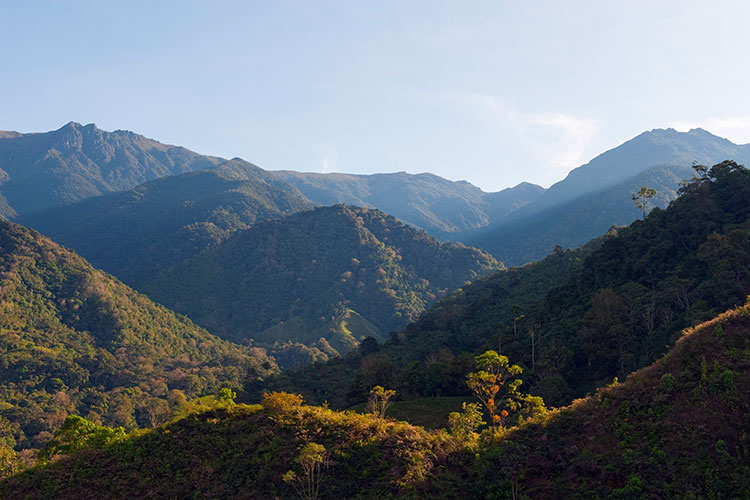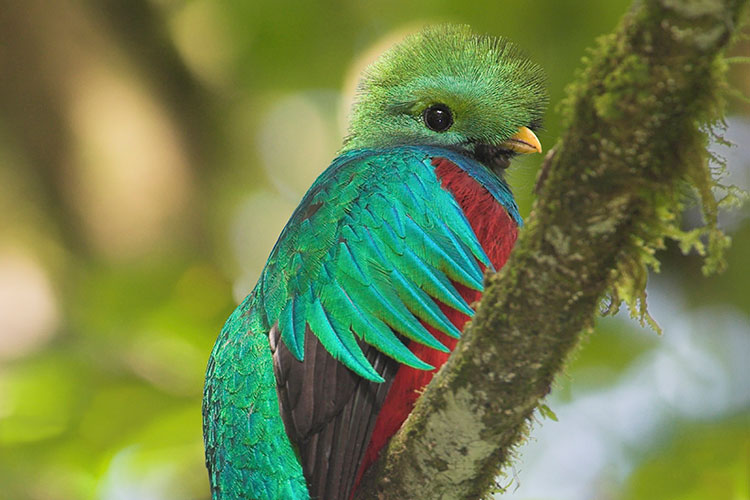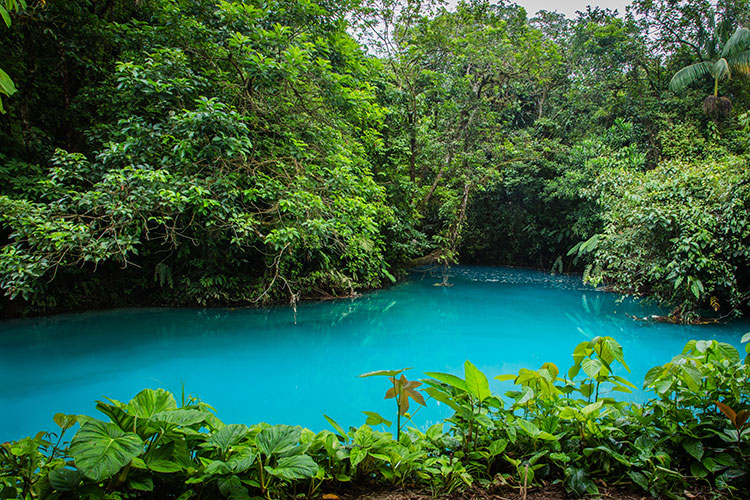There are plenty of reasons not to rent a car in Costa Rica. First and foremost, it costs more than in the USA or Europe, mainly because of an all-but-mandatory insurance charge that some rental companies spring on customers at the last minute, usually doubling the price of a rental (note: holders of some credit cards can avoid this cost - check with your provider). In addition, the roads in some areas are poorly marked, curvy, pothole-ridden, flooded and occasionally non-existent. Perhaps worst of all, thieves have been known to target and follow rental cars, waiting for a chance to break in. Now that we’ve got all the disclaimers out the way, here’s the other truth about getting around by car in Costa Rica: it’s fantastic.
Some of the most interesting, little-explored and out of the way destinations are only accessible by car, and for the adventurous, even gung-ho traveller, there’s simply no substitute for the freedom. In some cases, the drive itself – and all the striking scenery along the way – becomes a highlight of the trip. For those with the desire and the 4x4 (almost certainly necessary if you are planning to drive off the highway), here are the country's top five nerve-shredding road trips to put that extra insurance charge to good use.

Chirripo National Park by Christian Kober. AWL Images / Getty Images.
After winding along the narrow gravel roads connecting a few scattered mountain towns in southern Costa Rica, visitors come to what looks like the end of the road. Actually, this is the beginning of the driveway to Chirripó, Costa Rica’s highest peak. To get to the park entrance, visitors must gun it up the remnants of concrete slabs, worn away to nearly nothing. It’s a good idea to fill up with gas beforehand in the closest big city, San Isidro de el General.
Not interested in summiting 12,533-foot Chirripó? Not a problem. There are so many other reasons to brave these scenic mountain paths, including Cloudbridge Reserve, a 700-acre, privately owned research base next to Chirripó with free hiking, an enormous waterfall and an exotic plant garden. Nearby luxury art hotel, Monte Azul, invites and commissions local and international painters to stay and work on the lush grounds, where hummingbirds zip through tropical foliage and twisting jungle abounds. The owners raise goats to make their own cheese, and a nearby restaurant called Antojitos de Maíz (facebook.com) prepares the best tamales and chorreadas in town.
Jokingly referred to as a shortcut between Playas del Coco and Flamingo, this curvy mountain pass is famous for eating cars. Its narrow, plunging corridors snake through river crossings and shouldn’t be attempted in the rainy season, or with anything less than four-wheel drive. But those who dare to brave the Monkey Trail are in for one of Costa Rica’s most extreme thrills.
The trail – and it really does feel more like a hiking trail than a road – takes you on a bumpy ride down rock faces, through jungles and across streams toward the Pacific coastline, passing its very own Congo Trail Canopy Tour (tours-your-way.com). Eventually the trail spits you out in the idyllic beach town of Playa Potrero. Its dark sand cove and bathtub-warm seawater provide the perfect setting to relish the adrenaline rush. Then it’s on to Playa Flamingo, a scenic expat beach town and sport-fishing hub with several fantastic hotels and restaurants, including a traditional Costa Rican joint called Marie’s (mariesrestaurantincostarica.com). If you’ve got time, you can also head back north along the coast to check out Las Catalinas (lascatalinascr.com), an upscale, car-free beach community under development.

A resplendent quetzal in Cerro de la Muerte by Glenn Bartley. All Canada Photos / Getty Images.
Perhaps the most infamous road in Costa Rica is the Cerro de la Muerte, or 'Mountain of Death'. Every year, cars plunge over the side of this twisty, foggy mountain highway, often while driving in heavy rain, or after trying to pass a slow vehicle and ending up face-to-face with an oncoming truck. The key to driving this otherwise delightful road is to leave early in the morning.
Just south of the perilous stretch is a turn-off for San Gerardo de Dota, a charming town set in a high-altitude cloud forest where one of Central America’s rarest and most beloved birds – the quetzal – still thrives. The place to stay in Dota is Dantica Lodge, a picturesque escape with its own distinctive art gallery and delicious restaurant. Much of the country’s rainbow trout farming takes place in this small town, so be sure to make a stop at restaurants Kahawa or Comidas Típicas Miriam (miriamquetzals.com) for a taste of delicious trucha.
Yes, there are flights to Drake Bay, the most remote town on Costa Rica’s wild Osa Peninsula on the southern Pacific coast. But taking the long, less travelled road through the towering rainforest, vast meadows and tiny farming villages is one stunning trip. There’s not a whole lot of difference between some parts of this journey and the nearby Corcovado National Park, the most biodiverse area in the country, so don’t be surprised to spot scarlet macaws, monkeys and other wildlife right out the car window.
Vehicles must cross a total of seven rivers on this journey, some of which will require that a passenger get out and wade in to test the water, ensuring it is shallow enough to cross (in general, below the knees is safe). Upon arrival, visitors are treated to panoramic views of the bay and the sweeping ocean beyond, dotted with fishing boats and occasionally leaping dolphins. Accommodation here ranges from the new, swanky beachfront Copa del Arbol (copadearbol.com) to the basic camp sites in town. The tour not to miss is Costa Cetacea’s 'superpod' experience (costacetacea.com), which brings guests into the open ocean to encounter groups of dolphins numbering in the thousands.

The Rio Celeste by Michael L Baird. Flickr / Getty Images.
For visitors heading to the Arenal volcano, do yourself a favour: rent a car and include Rio Celeste in the plan. Arenal is good, but the volcanic eruptions and lava flows that made it a tourist destination stopped abruptly in 2010. Meanwhile, the country’s true natural wonder – an astonishing turquoise river – is as crazy azul as ever. The forest surrounding the river is lush and wild, providing a home to an abundance of Costa Rican fauna, including the iconic jaguar.
There are two ways to approach a stretch of river within Tenorio National Park (costarica-nationalparks.com), where special compounds called aluminosilicates absorb all the colours of sunlight except blue. The rejected rays create the hue of the most brilliant peacock feather you’ve ever seen. You can drive northwest from La Fortuna on paved roads to Guatuso, and from there, turn off on to an often steep, rocky affair only navigable with a 4x4. The reward for all the lurching and tossing is an arrival at the Rio Celeste Hideaway, a romantic retreat with its own jungle hike to a private section of river, where guests can bathe in pools beneath small waterfalls.
A faster and easier route takes you by the town of Cañas and up to the village of Bijagua, where a few hotels are gathered. But to reach the entrance to the national park or the beloved La Carolina Lodge, which features a fire-heated hot tub by the river and a short hike to a 70-foot waterfall, you'd better be ready to engage four-wheel drive.